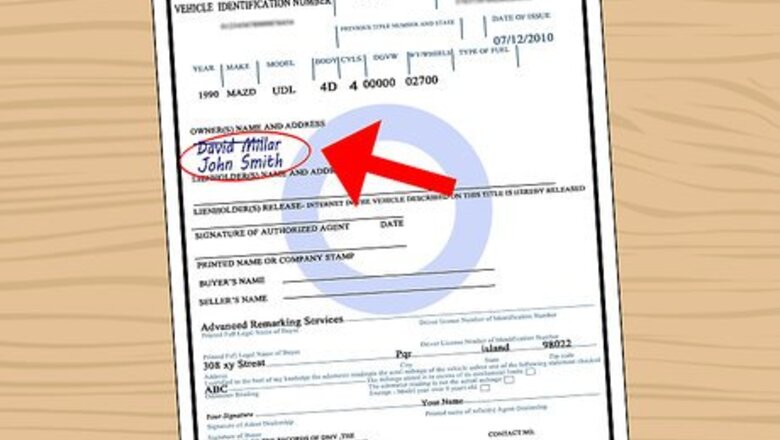
views
Preparing to Make the Change

Treat the name change as a sale. The person whose name is being removed from the title should complete the sections on the back of the title certificate as though he or she were selling the car. The other person, whose name is remaining on the title, will be listed as the buyer. The new “buyer” will then take the completed title to the Department of Motor Vehicles (DMV) and complete the steps for issuing a new title.
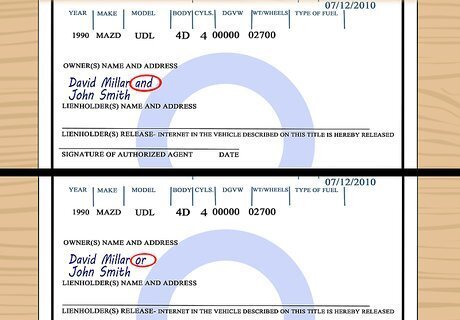
Check the names currently on the title. It makes a legal difference if the names appear on the title joined by “and,” “or,” or sometimes “and/or.” If the names are joined by “and,” then both named individuals will have to sign the title as “seller” make the transfer to the one person who is going to remain. If the two names are joined by “or” or by “and/or,” then either person alone can legally complete the transfer. Suppose, for example, that two friends want to start a band and travel the country together in a van. They buy the van together, and the title lists the owners as “John Smith or David Roberts.” If the band breaks up someday, either John or David could change the title into his own name without requiring a signature of the other one. (This example is just given to show the technical importance of the names. If this actually happened, however, the band member who got left out might have a law suit against the other one for half the value of the van.) Be careful. At least one state, Arizona, treats the “and/or” differently. In Arizona, for example, if the names on the title are listed as A “and/or” B, then it is treated the same as “and,” and both people must sign the transfer.
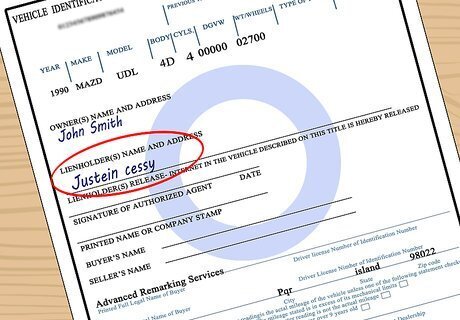
Check for lien holders. If the original title has one or more lienholders listed, then you have two options – either pay off the loan in full, or get the lienholder to agree to the change. If you cannot pay off the loan, and the lienholder does not agree to the change, then you will not be allowed to make the name change at this time.
Completing the Transfer
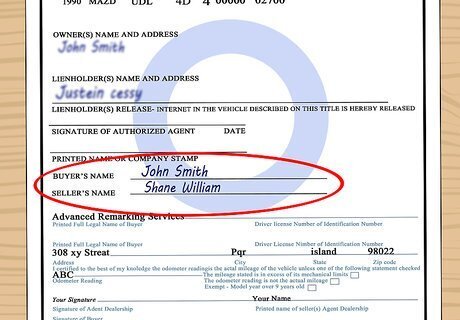
Complete the form on the back of the title certificate. Fill in all the spaces as though you were selling the car. The “seller” is the person whose name is coming off the title. The “buyer” is the person whose name is going to remain.
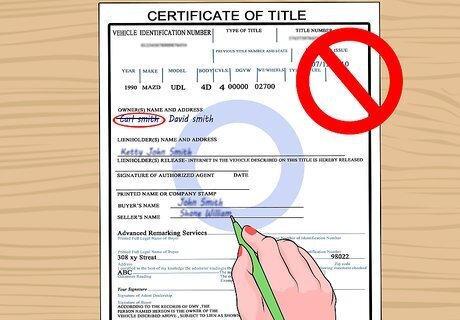
Be very careful. It is important to fill out the form completely and neatly. In some cases, if you make a mistake and cross out your error, the Department of Motor Vehicles may not accept the form. You would have to request a completely new title, and then start the transfer over again. Some states require that the signatures be notarized. Find out ahead of time if this applies to you and do not complete the form until a notary is present. Some states require that you complete the forms at the DMV in person. Find out if this applies to your state as well. Call ahead and see if it is possible to make an appointment, so that you can reduce the amount of time that you’ll need to wait.
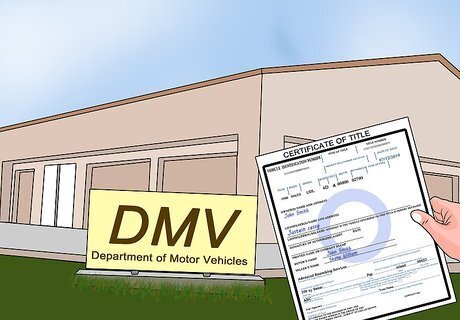
Take your forms to the DMV. In most cases, a transfer must be done in person at the DMV. In some states, you may be able to submit the paperwork by mail. Call your state’s Department of Motor Vehicles or check their web site online to find out which of these situations applies to you.
Dealing with Special Cases

Change the title to match your divorce settlement agreement. As part of the divorce, you need to decide who will keep the car, and who will be responsible for the payments, if there are any. Usually, these are the same. But after a divorce, things can get different. For example, you may agree that one party will continue paying the loan and insurance, while the other party will get full ownership of the car. Make the changes to the title to fit your agreement. In most cases, a transfer is treated as a sale, and the state is likely to charge a sales tax when the title is changed. However, in the event of a divorce, some states may waive this tax if you present a divorce order along with the application for the new title. You will have to check with the registry in your state to see what applies to you.
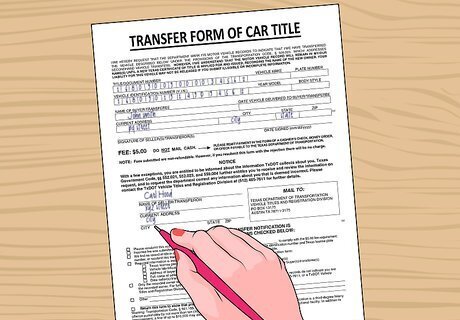
Treat a gift as a transfer and correct the title accordingly. Suppose the original title had two individuals’ names on it, say a parent and child. At some point, the parent chooses to give the car completely to the child as a gift. This will require having the parent remove his or her name from the title as described in this article. Complete the form as a transfer, with the sale price as $0. This may avoid a sales tax or use tax.

Correct the title to show a donation to charity. Many people choose to donate vehicles, particularly older ones, to charities. This will allow them to take the value of the car as a tax deduction, as long as the organization is a recognized 501(c)(3) charity. If you are doing this, complete the title the same as any other transfer, but put the name of the charity or it authorized representative as the “buyer,” with a sale price of $0. You will then give the completed paperwork to the charity. The charity will be responsible for completing the work with the DMV in order to transfer ownership.
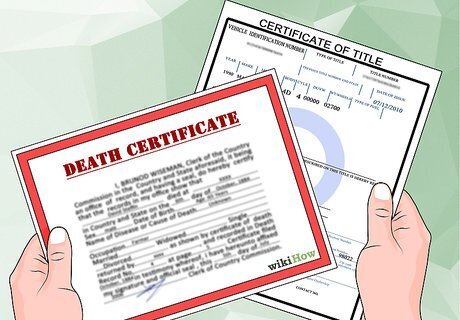
Decide what additional forms may be needed in case of a death. In case one owner on the title of a car passes away, the remaining owner will need to consider whether additional papers are needed, or even if any additional steps are necessary. If the title was in both spouse’s names, the surviving spouse can generally submit the original title with a copy of the death certificate. If the vehicle was left to someone in a will, then the executor of the estate will need to submit an affidavit or certificate along with the title. In any event, it will probably be advisable to get a probate attorney involved to make sure that the transfer is completed properly.


















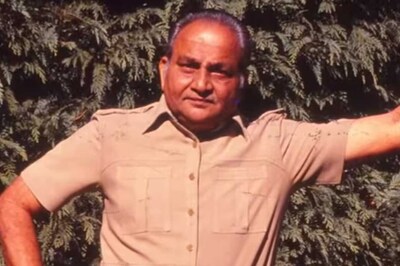

Comments
0 comment